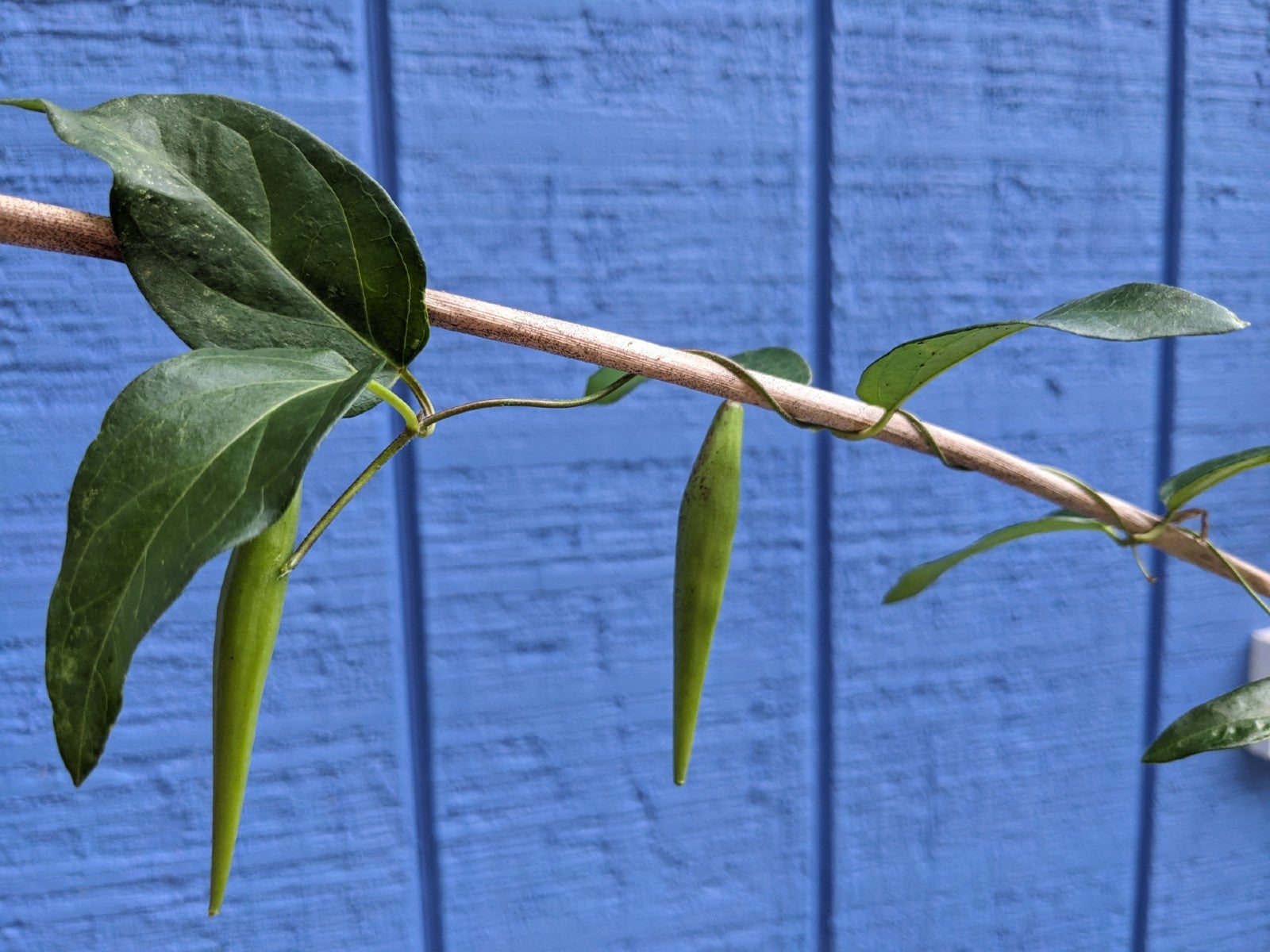Invasive Black Swallow Wort: Control And ID


The black swallow wort plant is a vine native to Europe that has become invasive in parts of the U.S. It was intentionally brought here as an ornamental vine but now wreaks havoc in many ecosystems. Learn how to identify this problematic vine and control methods to help eradicate it from your area.
Quick Facts about Black Swallow Wort:
- Botanical name - Cynanchum louiseae
- Height - 6 feet (1.8 m)
- Spread - NA
- Sun exposure - Sun to shade
- Soil requirements - All types
- Hardiness zones - 4 to 8
- When to plant - NA
The Problem with Black Swallow Wort
Black swallow wort vine has been declared invasive in much of the Midwest and Northeast U.S. Check with your local extension office to find out if it is a problem in your area.
As with most invasive plants, the primary problem with black swallow wort is that it outcompetes native species. It does this in several ways, including by tolerating a variety of conditions. It grows in both sun and shade and tolerates a variety of soils.
Black swallow wort also spreads and reproduces prolifically. It spreads through both rhizomes and seeds, producing thousands of seeds for every square meter. Each seed produces up to four embryos. These strategies give it a major advantage over many native plants. The rhizomes spread and can help a plant cover a large area quickly.
As a vine, black swallow wort can form dense, low-growing mats. It can also grow up and around other plants and strangle them. This gives it one of its common names, “dog-strangling vine.” Another strategy the vine has for outcompeting native species is allelopathy, meaning that it produces chemicals that harm other plants in the area.
Black Swallow Wort and Monarch Butterflies
That black swallow wort can outcompete and literally smother native plants is a problem. Another major issue with this invasive plant is the harm it causes to the already beleaguered monarch butterfly.
Monarchs solely lay eggs on milkweed; black swallow wort is related to milkweed and resembles it. Studies have found that monarchs mistake it for milkweed and lay eggs on it. Unfortunately, the invasive plant is toxic to the emerging caterpillars. Black swallow wort also harms monarchs indirectly by outcompeting native milkweed.
Sign up for the Gardening Know How newsletter today and receive a free copy of our e-book "How to Grow Delicious Tomatoes".
How to Identify Black Swallow Wort
Black swallow wort is a vine that can grow up to six feet (1.8 m) long, growing low along the ground or twining around other plants. The leaves are dark green, glossy, and simple, about three to four inches (7.6 to 10.2 cm) long and two to three inches (5.1 to 7.6 cm) wide. They are spaced opposite each other on the vine and are pointed at the ends.
The flowers are deep purple and almost black with a yellow center. They are star-shaped and small, growing in clusters. Black swallow wort blooms from June through late summer. The seed pods look like those on native milkweed, about two inches (5 cm) long and smooth.
You can find black swallow wort growing in shady wooded areas and woodland edges. It also thrives in disturbed areas, such as along fences, roads, and ditches.
How to Get Rid of Black Swallow Wort
If you find black swallow wort in your area, you can notify your extension office in case it is a new patch of growth only just identified. If it is on your property, consider trying one or more of these black swallow wort control methods to eradicate it:
Pulling
Pull black swallow wort out by the roots several times a year. You must get the entire crown out of the ground for this to be effective. If seed pods have formed, be careful not to let them burst and disperse. Dispose of the plants in the landfill, not in yard waste.
Mowing
Mowing is less effective and will not fully eradicate black swallow wort, but cutting it back before seeds form can help reduce dispersal.
Herbicides
Foliar herbicides can be effective against black swallow wort. Check with your extension office for recommendations and instructions for safe application.
As with most invasive plants, early detection is vital to control. Never plant black swallow wort, even though it can be an attractive vine. If you live in a region where it is invasive, watch out for it and attack patches of vines as soon as you notice them.
Note: Any recommendations pertaining to the use of chemicals are for informational purposes only. Chemical control should only be used as a last resort, as organic approaches are safer and more environmentally friendly.

Mary Ellen Ellis has been gardening for over 20 years. With degrees in Chemistry and Biology, Mary Ellen's specialties are flowers, native plants, and herbs.